Home >> PURE MATHS, Trigonometry, sine, cosine, tangent
first principles |
The General Angle
Consider a radius of length '1' rotating anti-clockwise about the origin.
The coordinates of any point on the circle give the values of the adjacent and opposite sides of a right angled triangle, with the radius the hypotenuse.
The General Angle ( θ theta) is the included angle between the radius and the x-coordinate of the point.
As the radius rotates the x and y values change. Hence the values of sine, cosine and tangent also change.
![]()

The result is summarized in the diagram below.
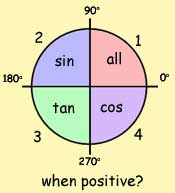
Example #1

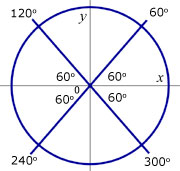
![]()
Example #2
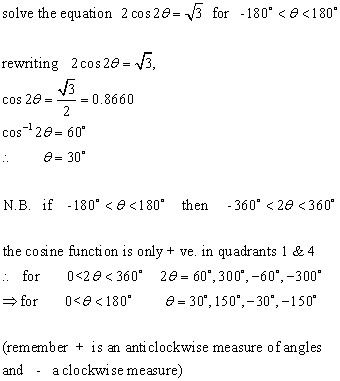
Sine
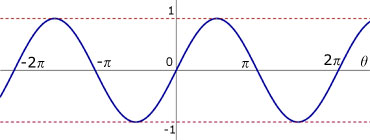
Points of interest :
The 'sine graph' starts at zero.
It repeats itself every 360 degrees(or 2 pi).
y is never more than 1 or less than -1
(vertical displacement from the x-axis is called the amplitude).
A 'sin graph' leads a cos graph by 90 degrees
Cosine
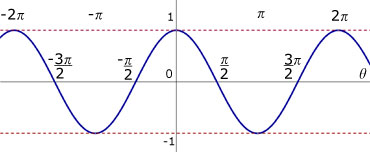
Points of interest:
The 'cosine graph' starts at one.
It repeats itself every 360 degrees(or 2 pi).
y is never more than 1 or less than -1
(displacement from the x-axis is called the amplitude).
A 'cos graph' lags a 'sin graph' by 90 degrees(pi/2) - this is termed a phase shift
Tangent

Points of interest:
The 'tangent graph' starts at zero.
It repeats itself every 180 degrees.
y can vary between numbers approaching infinity and minus infinity.
Further Comparison
Only the cosine function is symmetrical (a mirror image of itself) about the y-axis.
All the functions are cyclic - a waveform along the horizontal axis is repeated.
[ About ] [ FAQ ] [ Links ] [ Terms & Conditions ] [ Privacy ] [ Site Map ] [ Contact ]
